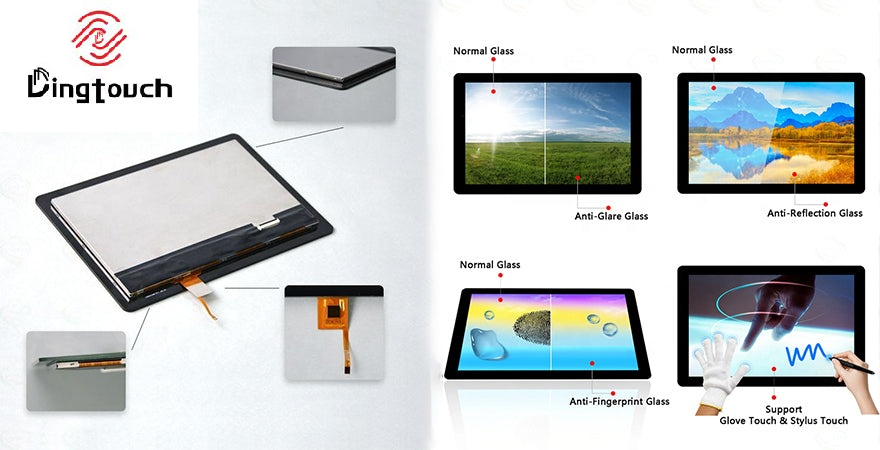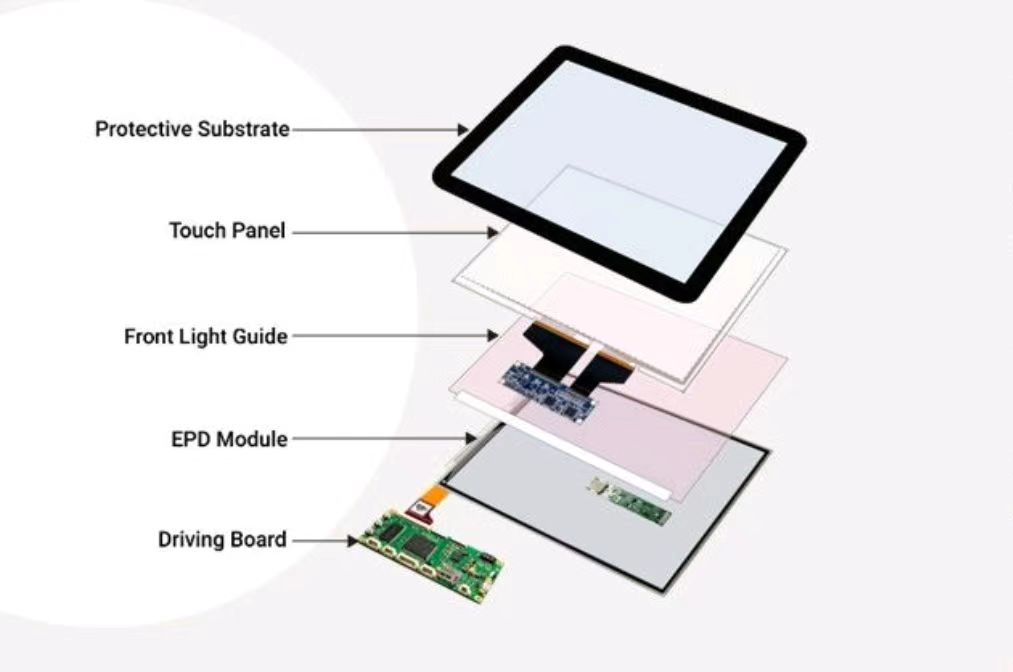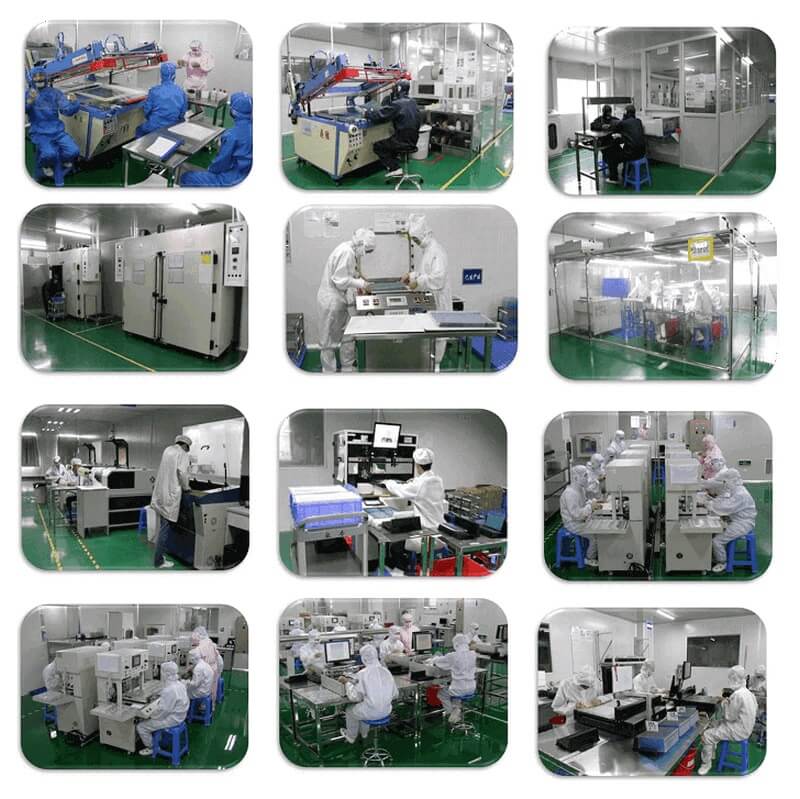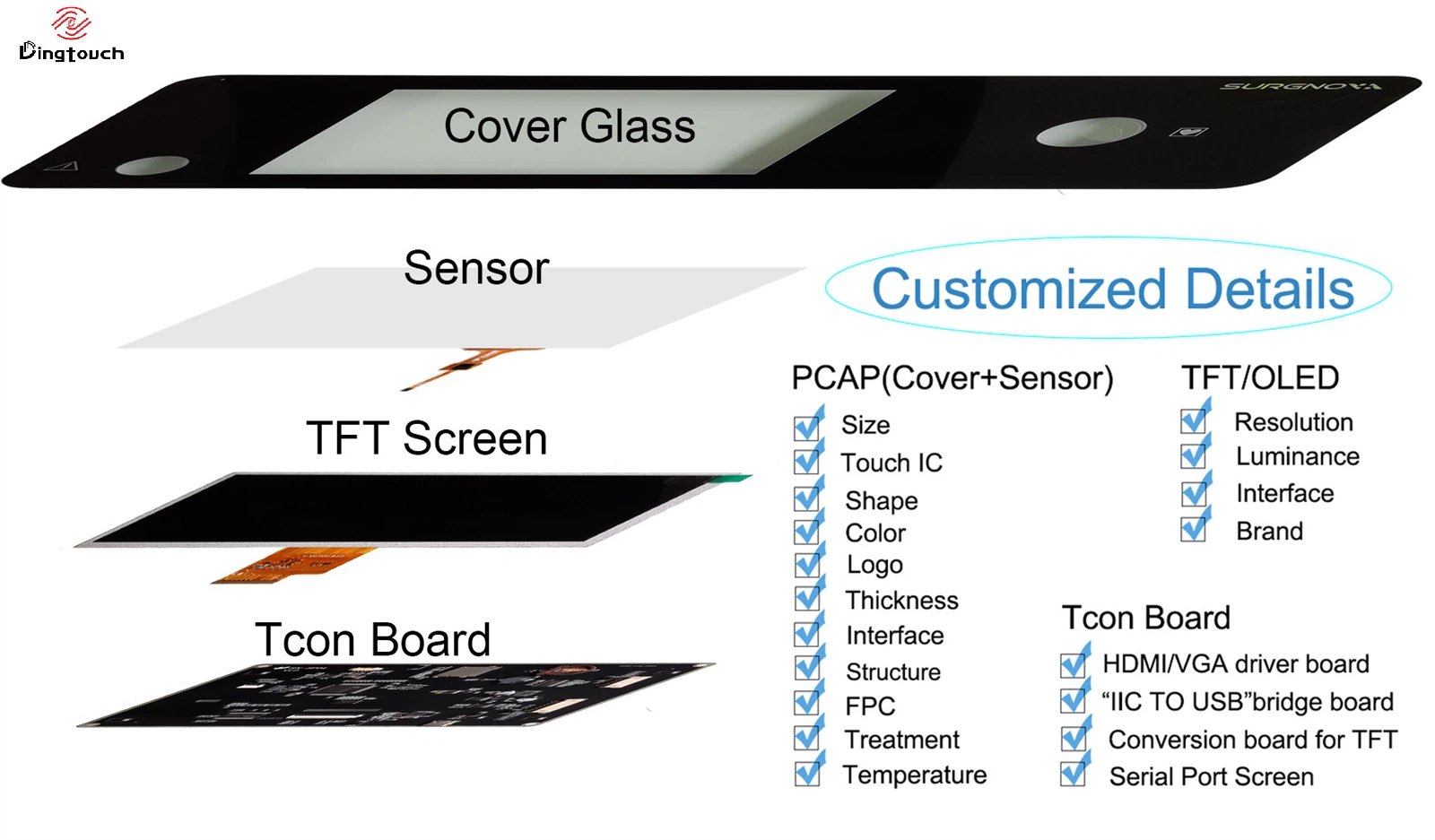News
What Is The Liquid in Lcd Screen?

What Is The Liquid in Lcd Screen?
Content Menu
● The Basics of LCD Technology
>> How LCD Work
● The Role of Liquid Crystals in LCD Screen
● Common Issues and Troubleshooting
>> 1. What is the purpose of the liquid inside LCD screen?
>> 2. How does liquid crystal work in an LCD display?
>> 3. Is the liquid inside LCD screen harmful to humans?
>> 4. Can the liquid inside LCD screen leak or cause damage to the display?
>> 5. What happens if the liquid crystal inside an LCD screen freezes?
Introduction
Liquid Crystal Display (LCD) screen have become a ubiquitous part of our daily lives, from smartphones to televisions. These screens come alive with vibrant colors and high-resolution images, thanks to the liquid inside them, a key component of LCD display technology. Unlike traditional cathode ray tubes (CRT), LCD screen are slim, lightweight, and energy efficient, making them the preferred choice for modern devices. 
The Basics of LCD Technology
What are Liquid Crystals?
Liquid crystals are a unique state of matter that exhibits characteristics of both liquids and solids. They possess the fluidity of a liquid, but their molecules are arranged in a crystal-like manner. This dual nature allows them to be manipulated by electric fields to control the passage of light, making them ideal for creating images on LCD screen.
How LCDs Work
1. Components: An LCD typically consists of several layers:
- Two glass plates with transparent electrodes made of indium tin oxide (ITO).
- A layer of liquid crystal material between the glass plates.
- Two polarizing filters, oriented perpendicularly to each other.
- Alignment layers of polymer on the electrodes.
- A backlight or reflective surface.
2. Polarization: Light waves are electromagnetic waves that can be polarized. A polarizing filter allows light waves vibrating in a specific direction to pass through while blocking others.
3. Pixel Structure: Millions of pixels make up a display. Each pixel consists of three subpixels: red, green, and blue (RGB). By varying the intensity of each subpixel, a wide range of colors can be produced.
4. Light Modulation:
- Without liquid crystal, the crossed polarizers would block all light, making the screen appear dark.
- The liquid crystal molecules align in a helical structure due to the alignment layers, rotating the polarization of incident light, and allowing light to pass through.
- When a voltage is applied, the liquid crystal molecules untwist and align with the electric field, blocking the light and making the pixel appear black.
- By controlling the voltage, the amount of light passing through can be varied, creating different levels of gray or color.
The Role of Liquid Crystals in LCD Screen
Liquid crystals play a fundamental role in the functioning of LCD screen. Unlike conventional display, which rely on emitted light, LCD manipulate the properties of light passing through liquid crystals to create images.
In LCD technology, liquid crystals are sandwiched between two layers of glass and coated with transparent electrodes. Applying an electric field to the liquid crystals causes them to rotate and align themselves. This alignment determines the amount of light that can pass through the panel. By selectively enabling or blocking light, the liquid crystals create the visual display on the screen.
The alignment of liquid crystals can be switched on or off rapidly, which enables LCD to display moving images and respond quickly to user input. This unique feature has made LCD screen popular in various applications, from televisions to computer monitors and smartphones.
Types of LCD
1. Twisted Nematic (TN) LCD: In a TN device, the alignment directions at the two electrodes are perpendicular to each other. The molecules arrange themselves in a helical structure, twisting the polarization of incident light.
2. Active Matrix LCD (TFT): An active matrix LCD, also known as a thin film transistor (TFT) display, has a transistor located at each pixel intersection. This requires less current to control the luminance of a pixel, improving the screen refresh time.
3. Passive Matrix LCD: A passive matrix LCD has a grid of conductors with pixels located at each intersection. A current is sent across two conductors to control the light for any pixel.
Materials Used in LCD
Liquid Crystal Compounds
The chemical composition of liquid crystals used in LCD can vary. These compounds are designed to have specific properties, such as:
- Appropriate viscosity and elasticity.
- Stability over a wide temperature range.
- Ability to align uniformly under an electric field.
- Optical properties suitable for modulating light.
Other Materials
1. Indium Tin Oxide (ITO): Used for transparent electrodes.
2. Polarizing Films: Control the polarization of light.
3. Glass Substrates: Provide a stable and transparent base for the LCD.
4. Alignment Layer: A thin polymer layer that aligns the liquid crystal molecules.
Advantages of LCD
1. Slim and Lightweight: LCD are thinner and lighter than CRT display.
2. Energy Efficient: LCD consume less power compared to CRT.
3. High Resolution: LCD can produce very crisp and detailed images.
4. Less Eye Strain: LCD emit less radiation and flicker, reducing eye strain.
Disadvantages of LCD
1. Viewing Angle Limitations: The image quality of LCD can degrade at certain viewing angles.
2. Black Levels: LCD may struggle to produce true black colors, resulting in lower contrast ratios.
3. Response Time: Slower response times can lead to motion blur in fast-paced scenes.
4. Temperature Sensitivity: Extreme temperatures can affect the performance and lifespan of liquid crystals.
Common Issues and Troubleshooting
1. Dead Pixels: These are pixels that do not light up or remain stuck on a single color.
2. Backlight Issues: Problems with the backlight can cause the screen to appear dim or unevenly lit.
3. Color Distortion: Incorrect color settings or hardware issues can lead to distorted colors.
4. Screen Flickering: This can be caused by a faulty backlight, loose connections, or driver issues.
Conclusion
Understanding the liquid inside LCD screen is crucial in unraveling the secret behind LCD display technology. Liquid crystals play a vital role in controlling the behavior of light to produce the images we see on modern screen. By applying electric currents to different regions of the liquid crystal, precise control over the passage of light is achieved, resulting in the formation of pixels and the display of images. This technology has revolutionized the way we interact with visual information, from computer monitors to smartphones and televisions, making it an integral part of our everyday lives.
Frequently Asked Questions
1. What is the purpose of the liquid inside LCD screen?
The liquid, called liquid crystal, is used to manipulate the light passing through the screen. It helps create images and texts by selectively allowing or blocking the light.
2. How does liquid crystal work in an LCD display?
Liquid crystal molecules align in response to an electric current. This alignment controls the amount of light that passes through the screen, resulting in the display of different colors and images.
3. Is the liquid inside LCD screen harmful to humans?
No, the liquid crystal used in LCD screen is not harmful to humans. It is typically a combination of organic compounds that pose no significant health risks.
4. Can the liquid inside LCD screen leak or cause damage to the display?
While it's rare, liquid crystal can potentially leak if the screen gets damaged. However, modern LCD screen are designed with multiple layers to minimize the risk of leakage, ensuring the liquid remains contained and does not damage the display.
5. What happens if the liquid crystal inside an LCD screen freezes?
If the liquid crystal freezes, it can disrupt the alignment of molecules, leading to distorted, blurry, or non-functional display. To prevent this issue, LCD screen are typically built with components that generate heat to maintain the appropriate temperature for the liquid crystal to remain in its liquid state.

DINGTouch: Committed to continuous innovation and improvement of product quality to meet customers' high requirements and expectations.
DINGTouch is a manufacturer that provides high quality touch screen panels. Focus on the design, manufacturing and sales of touch screen panels, and are committed to providing customized solutions that satisfy customers.
DINGTouch: In the process of customizing touch screen panels, we focus on close cooperation and communication with customers. Understanding customers' needs and providing customized solutions will meet customers' individual needs. The company's products are favored by customers for their high quality and reliability, and provide them with the best touchscreen panel solutions.
At DINGTOUCH, we are the world's leading touchscreen manufacturer, helping businesses around the world take advantage of this exciting technology. For more information, please visit the home page now.
Find the DINGTouch technical team to achieve the success of your company's new project.
How to choose touch screen customization?
DINGTouch is a company specializing in the R&D and production of touch screen technology, headquartered in Shenzhen, China. As a professional touch screen supplier, DINGTouch is committed to providing high-quality, stable and reliable touch screen products to meet the diverse needs of customers. We continue to carry out technological innovation and product optimization to ensure that its touch screen products have good sensitivity, accuracy and durability.
In addition to the products themselves, we also focus on cooperation and communication with customers, and are committed to providing customized solutions and excellent after-sales services. Through continuous efforts to improve product quality and customer satisfaction, we have established a good reputation in the touchscreen industry and won widespread market recognition.

What DINGTOUCH can do:
• PCAP maximum size 65”
• Multi-touch (Touch screen can be customized to your needs.)
• Optical bonding service/air bonding
• LCD interface: HDMI/RGB/MIPI/LVDS/EDP, etc.
• PCAP interface: IIC/USB interface
• CTP can customize the cover glass surface treatment process AG (anti-glare), AR (anti-reflection), AF (anti-fingerprint), waterproof, and glove touch
• Supports 0.55 mm-12 mm coverslip touch.
• Support operating temperature: -40℃-90℃.
Dingtouch Industrial Capacitive Touch Screen Manufacturer
In conclusion, Dingtouch as a professional touch screen manufacturer with more than 10 years touch screen experience.We have many capacitive touch screen. Such as5 inch touch screen,7 inch touch screen,10.1inch touch screen,15 inch touch screen,15.6 inch touch screen,17 inch touch screen,18.5 inch touch screen,19 inch touch screen,21.5 inch touch screen,32 inch touch screen, However, we also welcome to customize your own touch screen . Contact our team today to learn what capacitive touch screen are best for our retail business needs.
Contact us NOW! sales@szdingtouch.com
DINGTouch: Committed to continuous innovation and improvement of product quality to meet customers' high requirements and expectations.
DINGTouch is a manufacturer that provides high quality touch screen panels. Focus on the design, manufacturing and sales of touch screen panels, and are committed to providing customized solutions that satisfy customers.
DINGTouch: In the process of customizing touch screen panels, we focus on close cooperation and communication with customers. Understanding customers' needs and providing customized solutions will meet customers' individual needs. The company's products are favored by customers for their high quality and reliability, and provide them with the best touchscreen panel solutions.
At DINGTOUCH, we are the world's leading touchscreen manufacturer, helping businesses around the world take advantage of this exciting technology. For more information, please visit the home page now.
Find the DINGTouch technical team to achieve the success of your company's new project.
How to choose touch screen customization?
DINGTouch is a company specializing in the R&D and production of touch screen technology, headquartered in Shenzhen, China. As a professional touch screen supplier, DINGTouch is committed to providing high-quality, stable and reliable touch screen products to meet the diverse needs of customers. We continue to carry out technological innovation and product optimization to ensure that its touch screen products have good sensitivity, accuracy and durability.
In addition to the products themselves, we also focus on cooperation and communication with customers, and are committed to providing customized solutions and excellent after-sales services. Through continuous efforts to improve product quality and customer satisfaction, we have established a good reputation in the touchscreen industry and won widespread market recognition.
What DINGTOUCH can do:
• PCAP maximum size 65”
• Multi-touch (Touch screen can be customized to your needs.)
• Optical bonding service/air bonding
• LCD interface: HDMI/RGB/MIPI/LVDS/EDP, etc.
• PCAP interface: IIC/USB interface
• CTP can customize the cover glass surface treatment process AG (anti-glare), AR (anti-reflection), AF (anti-fingerprint), waterproof, and glove touch
• Supports 0.55 mm-12 mm coverslip touch.
• Support operating temperature: -40℃-90℃.
Dingtouch Industrial Capacitive Touch Screen Manufacturer
In conclusion, Dingtouch as a professional touch screen manufacturer with more than 10 years touch screen experience.We have many capacitive touch screen. Such as5 inch touch screen,7 inch touch screen,10.1inch touch screen,15 inch touch screen,15.6 inch touch screen,17 inch touch screen,18.5 inch touch screen,19 inch touch screen,21.5 inch touch screen,32 inch touch screen, However, we also welcome to customize your own touch screen . Contact our team today to learn what capacitive touch screen are best for our retail business needs.
Contact us NOW! sales@szdingtouch.com
CATEGORIES
CONTACT US
Contact: Dingtouch
Phone: +8615815536116
Tel: +8615815536116
Email: sales@szdingtouch.com
Add: Building A, Bailu Plaza, No. 48, Gonghe Industrial Road, Gongle Community, Xixiang Street, Baoan District, Shenzhen,China. 518126



 Dingtouch
Dingtouch